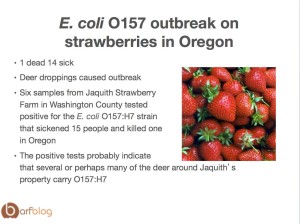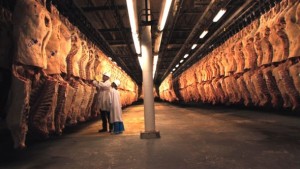Zerebko Zoo Tran, a traveling petting zoo, is returning to the 2015 Rice County Fair, a year after it was suspected to be the source of an E. coli outbreak.
 In 2014, the Minnesota Department of Health identified 13 people from four different events who developed E. coli after visiting the Zerebko Zoo Tran traveling petting zoo.
In 2014, the Minnesota Department of Health identified 13 people from four different events who developed E. coli after visiting the Zerebko Zoo Tran traveling petting zoo.
But Rice County Fair officials say fair goers shouldn’t be worried. Rice County Fair Executive Director John Dvorak said they were comfortable bringing Zerebko Zoo Tran back.
“The biggest factor is that they were extremely cooperative in working with the department of health, and others with the investigation,” Dvorak said.
Dvorak said the fair has also made changes to the facilities fair goers can use to clean up after visiting the zoo. In the past, the fair supplied hand-washing stations that used a chemical to sanitize hands. This year, the fair is bringing running-water hand washing stations with soap.
“E. coli is best cleaned away by friction, so by bringing the running water hand washing stations, that will help get rid of anything that could be spread,” Dvorak said.
Operational changes have been made in the fairground’s barns, like keeping an extra eye to keep walkways clear of waste and making layout changes within the barns so animals never have to step outside to go to a different part of the barn, he said.
Wally Zerebko, owner of Zerebko Zoo Tran, said after the incident in 2014, he contacted several experts and had all of his animals tested. He also had the company’s vet mention the problem at a conference, which led to them finding a vaccine they could give the animals.









